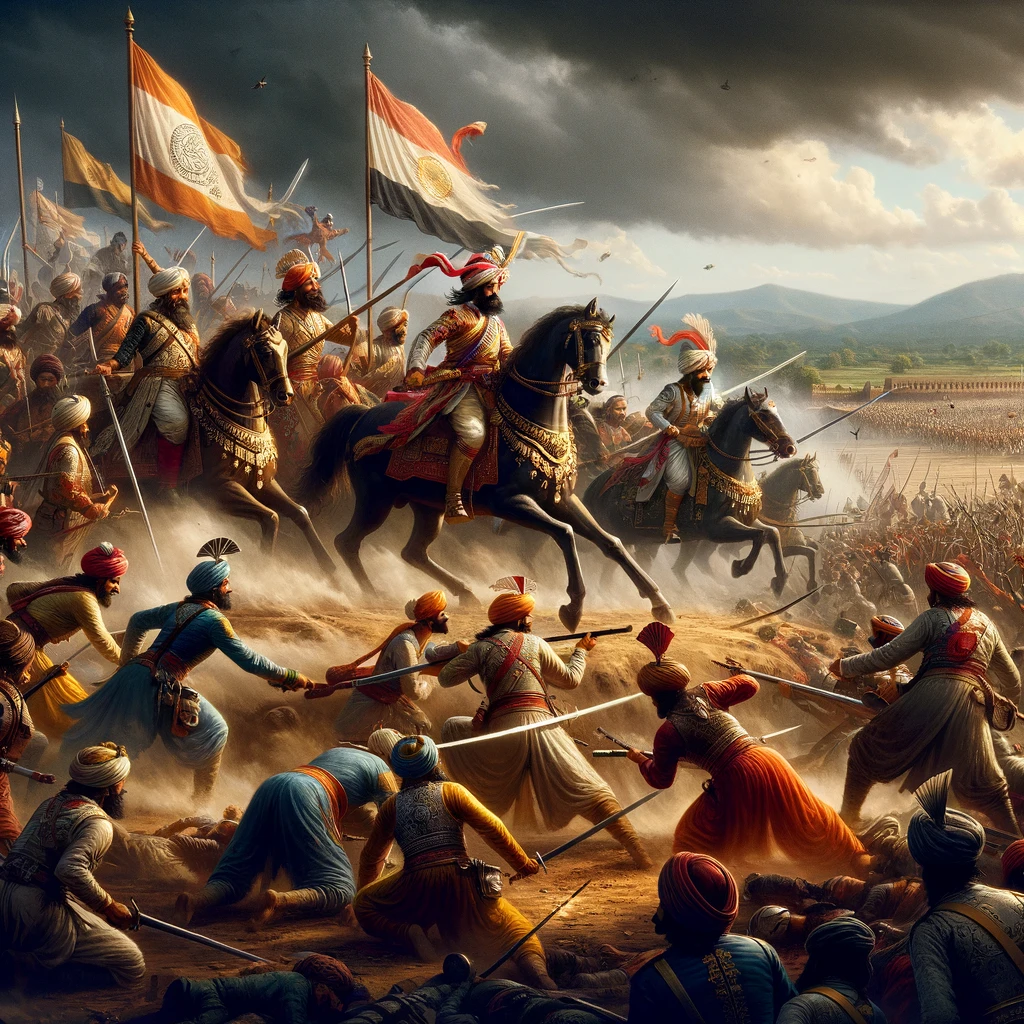The Battle of Delhi (1753): A Turning Point in Indian History
The Battle of Delhi in 1753 marks a significant confrontation between the Kingdom of Bharatpur under Maharaja Jawahar Singh and the Mughal Empire. This event showcased the military might of Bharatpur and highlighted the declining power of the Mughal Empire. Maharaja Jawahar Singh and the Mughal Emperor, key figures in this historic clash, represent a turning point in the power dynamics of northern India, paving the way for the rise of regional kingdoms.
Prelude to the Battle
In the lead-up to the Battle of Delhi, the Kingdom of Bharatpur, under Maharaja Jawahar Singh’s leadership, emerged as a formidable state. His military campaigns and diplomatic efforts expanded Bharatpur’s influence significantly. Meanwhile, the once-dominant Mughal Empire was experiencing a decline, weakened by internal strife and external pressures. This period set the stage for the Battle of Delhi, a conflict that tested both the rising kingdom and the faltering empire’s resolve and capabilities.
Feature Image: This image vividly portrays a historic battle scene, possibly representing the Battle of Delhi in 1753. In the foreground, a group of warriors clad in vibrant, traditional Indian armor and turbans engage in combat, wielding swords and spears. The central figure, likely Maharaja Jawahar Singh, is mounted on a black horse, leading the charge against the adversaries. Flags bearing the sun symbol fly high, signifying the Bharatpur kingdom. In the background, the chaos of battle ensues, with soldiers and horses clashing, and a sense of movement and urgency is palpable throughout the scene. (https://hinduinfopedia.in/wp-content/uploads/2024/02/DALL·E-2024-02-22-19.28.18_historic_scene_Battle_of_Delhi_1753_Bharatpur_Maharaja_Jawahar_Singh.webp)

I enjoy the efforts you have put in this, thank you for all the great content.
I appreciate your piece of work, regards for all the informative blog posts.
What i do not realize is in reality how you are now not actually much more well-favored than you may be right now. You are very intelligent. You know thus significantly relating to this subject, made me in my opinion consider it from so many various angles. Its like women and men aren’t fascinated except it¦s something to accomplish with Woman gaga! Your own stuffs excellent. All the time take care of it up!